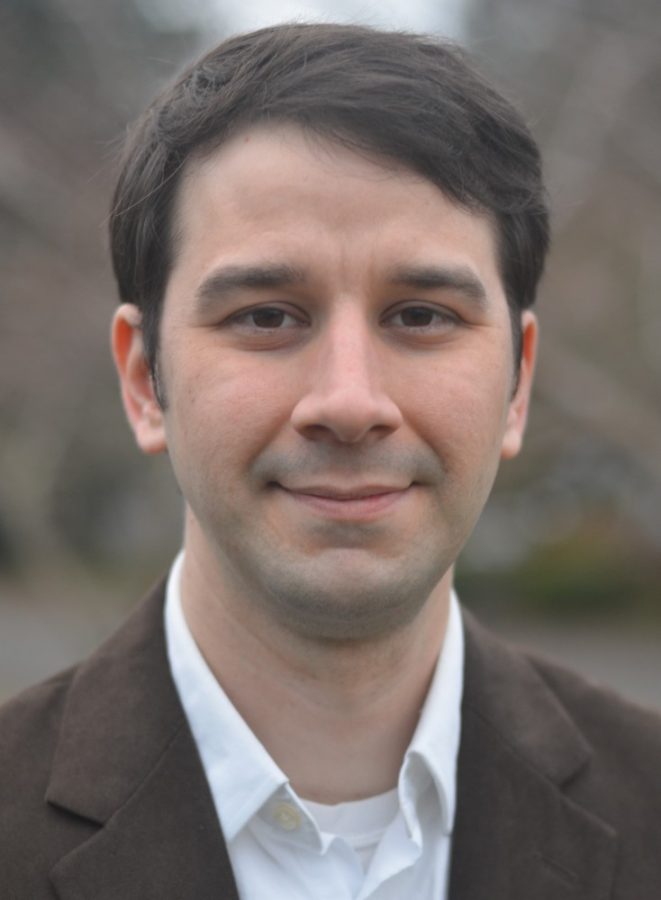UA Physics Department professor, John Schaibley, has received a $360,000 grant from the Air Force Office of Scientific Research to study plasmonic amplifiers. He is one of 58 scientists to receive the grant, with a total of $21 million handed out between them.
Schaibley’s work focuses on using light waves, or plasmonics, to create ultra-fast transistors. The grant was given out for two reasons: To keep the U.S. at the forefront of technology and as a way to fund the next generation of graduate students still in need of experience. Schaibley currently has two grad students working with him.
Transistors are small chips that act as both switches and amplifiers. They can halt electrical currents as well as increase total output. Transistors are essential to electronics and are used most everywhere.
According to Moore’s Law, every year the number of transistors per square inch is doubled. By minimizing distance between transistors, overall speed and processing power increases. The less distance for an electron to travel, the faster it can reach its goal.
“Modern electronics is based on manipulation and flow of charge through wires,” Schaibley said.
RELATED: The UA debuts a new supercomputer that will serve as vital component in research
What he hopes to do is build computer processors using optics and photons.
Plasmons are confined light waves coupled with electronic charge waves. The study of plasmonics itself is not new; researchers in the 1980s used light waves to excite and energize electrons on conductive metal surfaces.
The goal of this research is to bring photons onto a chip. With traditional storage methods, we can only contain a single light wave, which is about 500 billionths of a meter, or 500 nano meters. By sandwiching the light waves between a conductive metal and a dielectric, some of the energy can be stored in the metal, allowing for smaller storage.
Dielectric is a word for insulator, something that doesn’t conduct electricity well, like glass. By putting these things together it creates an interface for the light waves to travel through.
The average computer can send messages at around the speed of a nanosecond. Plasmonic transistors, however, have the potential to got 1,000 to 10,000 times as fast.
RELATED: New properties of graphene explored
In order to mimic the switching behavior of standard transistors with optics, two lasers are needed. One laser will pump energy into atoms and excite them, which will then determine whether or not the second laser beam will be absorbed or reflected.
“You can use this to mimic the switching behavior,” Schaibley said.
Naturally, as electrons are transported through conductors, they lose energy through a process called ohmic loss. They lose energy by bumping into the metal components and heating them up. Since no perfect conductors exist, there will always be a loss in energy. The challenge is to overcome this loss.
In order to overcome the energy loss, Schaibley is using an ultra-thin semi-conductor material, only three atoms thick. The material is made of graphene, and it has the conductivity of thick copper. The material itself is actually only one atom thick, but Schaibley is using three layers. In fact, it is so thin it’s essentially two-dimensional.
“These electrons in these ultra-thin semi-conductors react very well with light,” he said.
By layering it between the metal and the dielectric, he hopes to simulate and improve upon the switching and amplifying behavior and overcome the loss in energy.
“The key here is that it’s a non-linear interference effect between the propagating surface waves and the electrons in this 2-D semi-conductor that allow it to take energy out of one wave and pump it into the other,” Schaibley said.
In a linear medium, light waves do not interact with each other. By inserting the semi-conductor, the system becomes non-linear, the waves begin to interact, one wave will control the other and they share energy.
By combining light and electronic charge waves, the plasmonic waves can be stored on nano-scale chips. As mentioned before, however, there will be an ohmic loss in energy as the structure is heated. By introducing the excited electrons from the semi-conductor, Schaibley seeks to amplify the output and overcome the loss.
This is primarily a proof of concept experiment. Schaibley is starting off with only one plasmonic transistor. But if it can be successfully done with just one, it can be duplicated and then multiplied.
Follow William Rockwell on Twitter.









